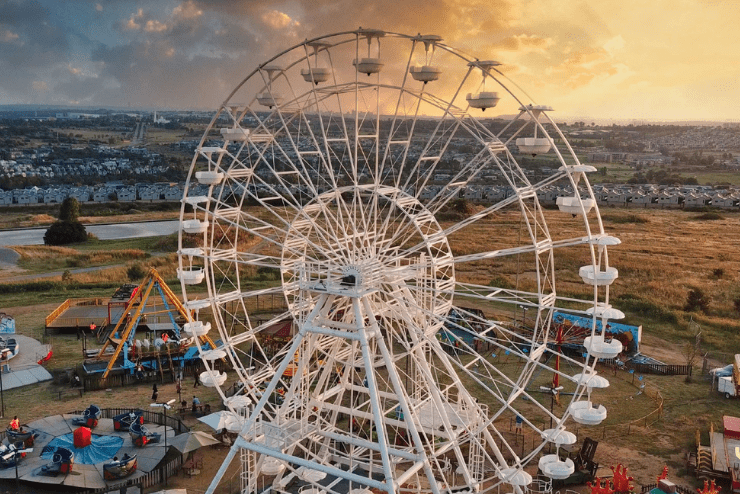The Main Principles Of Johannesburg North Attractions
Table of ContentsNot known Details About Johannesburg North Attractions Johannesburg North Attractions Things To Know Before You Get ThisThe Best Strategy To Use For Johannesburg North AttractionsRumored Buzz on Johannesburg North AttractionsThe Definitive Guide for Johannesburg North AttractionsNot known Details About Johannesburg North Attractions
The city owes its area to the existence of a a lot more priceless resource: gold. The city grew on the side of the Witwatersrand Main Reef, a below ground stratum of gold-bearing quartz-silica corporation that arcs for hundreds of miles under the Highveld. Most of the gold mines in the city ceased operation in the 1970s, however in its day the Witwatersrand gold industry made up greater than 40 percent of the globe's yearly gold production.Johannesburg has a temperate climate. The city enjoys concerning 8 hours of sunshine per day in both winter months and summer season.
What rain the city receives drops virtually specifically in the summertime months, typically in incredible late-afternoon electric storms., where several citizens still rely on coal for gas.

The Main Principles Of Johannesburg North Attractions
The balance of the city is occupied by whites. Lodging differs in personality and top quality. Soweto is infamous for its endless rows of municipally constructed, two-room matchbox homes, yet it additionally has a couple of flourishing enclaves in addition to bristling squatter camps, where 10s of thousands live without water, electricity, or hygiene centers.
Physical growth, although somewhat restricted by transport, continued promptly as immigration to South Africa, and Johannesburg particularly, increased considerably. This problem was solved in the 1930s when the auto was presented in automation to South Africa. Automobiles were, generally, confined to the affluent, and permitted them to relocate to the north of the city and commute into the centre.
Many inadequate suburbs were mixed, with bad blacks and whites cohabiting, although the affluent residential areas were typically scheduled for whites. This transformed with the election of the National Party in the 1948 political elections, that started to formalise the system called racism. Apartheid formally marked which suburban areas each race could stay in under the Group Locations Act.
The previous system of eleven phoned number areas was reorganised in 2006. Marshalltown, as seen from the top of the Carlton Centre. The M1 and M2 run behind the structures, and the southerly suburbs expand past the highway boundary. The central city of Johannesburg lies within the city's Region F. The approximated populace of the area is 200,000, [] yet the variety of individuals staying in the central city on a casual basis is unidentified, as lots of are prohibited immigrants. Most higher-income locals and white people have moved to the northern suburban areas and have been replaced by lower-income black people. The unemployment, education and learning, and age profiles of the area are all unknown, due to the trouble of obtaining trustworthy details about the location.
The 30-Second Trick For Johannesburg North Attractions
Centred on the CBD, the area includes the residential areas of Yeoville, Bellevue, Troyeville, Jeppestown, and Berea to the east. To the west it spreads out to Pageview (Johannesburg North attractions) and Fordsburg. There are little commercial locations to the south, such as City West-Denver and Benrose. Around 800,000 commuters travel through the central city on a daily basis, and it functions as a my sources local shopping node for visitors from the southerly residential areas. Yeoville and Bellevue have a mix of apartment and single residential units on little whole lots. The area is situated on a hilly divide that ranges from east to west. One of the most noticeable geographical function is Observatory Ridge, which is named for the big observatory located on it. The leisure spaces are no more utilized, because of safety and security issues.

Some Known Facts About Johannesburg North Attractions.
The eastern suburban areas are some of the earliest areas of Johannesburg, there are large neighborhoods of Jewish and various other European backgrounds, the majority of the population is English speaking. There are three golf programs as well as a why not try these out number of safeguarded ridges with viewsites.
Originally built to house male migrant employees, several have actually been enhanced as homes for couples and families. The residential area was not traditionally enabled to create employment centres within the location, so nearly all of its citizens are commuters to other parts of the city.
The Single Strategy To Use For Johannesburg North Attractions
The N1 Western Bypass connects the north suburban areas with the north-western suburbs. The residential locations in the northern suburban areas are mainly formal, without any substantial locations of casual real weblink estate, or housing that does not have a permanent framework. Although this is a well-known area, there is a fad of land use adjustment from property to business, especially along primary arterial roadways and around recognized nodes.
Roadways to the eastern and west are much less well established, as there are no highways taking a trip in that direction. Towards the northern boundary of the city, the thickness of growth reduces, leaving large areas of primitive land around Midrand.
The Facts About Johannesburg North Attractions Revealed
The first suburban area to the north of the inner city is Parktown, which lies on a hill ignoring the central city and Hillbrow. It has many wealthy homeowners and Edwardian-style manors, along with the Education and learning and Medical universities of the University of the Witwatersrand. The large concrete Charlotte Maxeke Johannesburg Academic Health Center controls the skyline of Parktown.